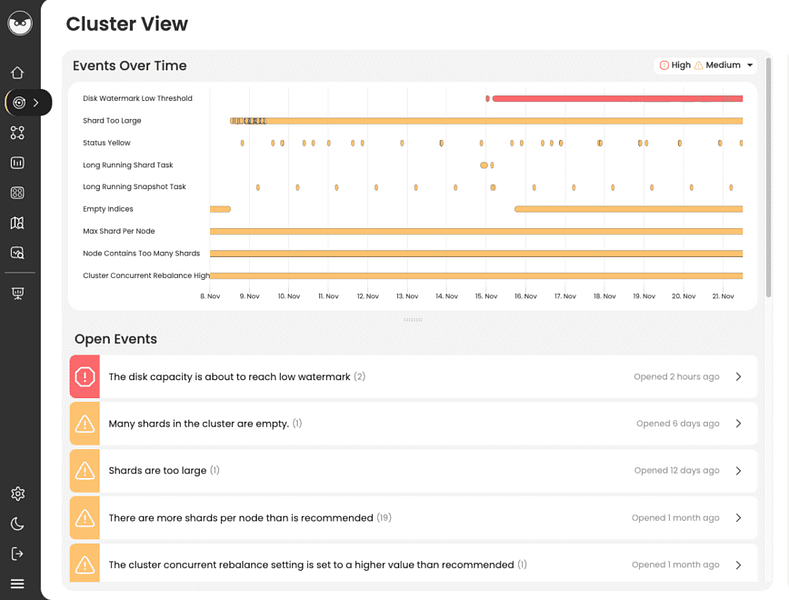Opster Team
Last updated: Nov 7, 2022
| 2 min readIn addition to reading this guide, we recommend you run the Elasticsearch Health Check-Up. It will detect issues and improve your Elasticsearch performance by analyzing your shard sizes, threadpools, memory, snapshots, disk watermarks and more.The Elasticsearch Check-Up is free and requires no installation.
To manage all aspects of your OpenSearch operation, you can use Opster’s Management Console (OMC). The OMC makes it easy to orchestrate and manage OpenSearch in any environment. Using the OMC you can deploy multiple clusters, configure node roles, scale cluster resources, manage certificates and more – all from a single interface, for free. Check it out here.
Document in OpenSearch
What is an OpenSearch document?
While an SQL database has rows of data stored in tables, OpenSearch stores data as multiple documents inside an index. This is where the analogy must end however, since the way that OpenSearch treats documents and indices differs significantly from a relational database.
For example, documents could be:
- Products in an e-commerce index
- Log lines in a data logging application
- Invoice lines in an invoicing system
Document fields
Each document is essentially a JSON structure, which is ultimately considered to be a series of key:value pairs. These pairs are then indexed in a way that is determined by the document mapping. The mapping defines the field data type as text, keyword, float, time, geo point or various other data types.
OpenSearch documents are described as schema-less because OpenSearch does not require us to pre-define the index field structure, nor does it require all documents in an index to have the same structure. However, once a field is mapped to a given data type, then all documents in the index must maintain that same mapping type.
Each field can also be mapped in more than one way in the index. This can be useful because we may want a keyword structure for aggregations, and at the same time be able to keep an analysed data structure which enables us to carry out full text searches for individual words in the field.
For a full discussion on mapping please see here.
Document source
An OpenSearch document _source consists of the original JSON source data before it is indexed. This data is retrieved when fetched by a search query.
Document metadata
Each document is also associated with metadata, the most important items being:
_index – The index where the document is stored
_id – The unique ID which identifies the document in the index
Documents and index architecture
Note that different applications could consider a “document” to be a different thing. For example, in an invoicing system, we could have an architecture which stores invoices as documents (1 document per invoice), or we could have an index structure which stores multiple documents as “invoice lines” for each invoice. The choice would depend on how we want to store, map and query the data.
Examples:
Creating a document in the user’s index:
POST /users/_doc
{
"name" : "Petey",
"lastname" : "Cruiser",
"email" : "petey@gmail.com"
}In the above request, we haven’t mentioned an ID for the document so the index operation generates a unique ID for the document. Here _doc is the type of document.
POST /users/_doc/1
{
"name" : "Petey",
"lastname" : "Cruiser",
"email" : "petey@gmail.com"
}In the above query, the document will be created with ID 1.
You can use the below ‘GET’ query to get a document from the index using ID:
GET /users/_doc/1
Below is the result, which contains the document (in _source field) as metadata:
{
"_index": "users",
"_type": "_doc",
"_id": "1",
"_version": 1, "_seq_no": 1, "_primary_term": 1,
"found": true,
"_source": {
"name": "Petey",
"lastname": "Cruiser",
"email": "petey@gmail.com"
}
}Find & fix Elasticsearch problems
Opster AutoOps diagnoses & fixes issues in Elasticsearch based on analyzing hundreds of metrics.
Fix Your Cluster IssuesConnect in under 2 minutes

Jose Rafaelly
Head of System Engineering at Everymundo





